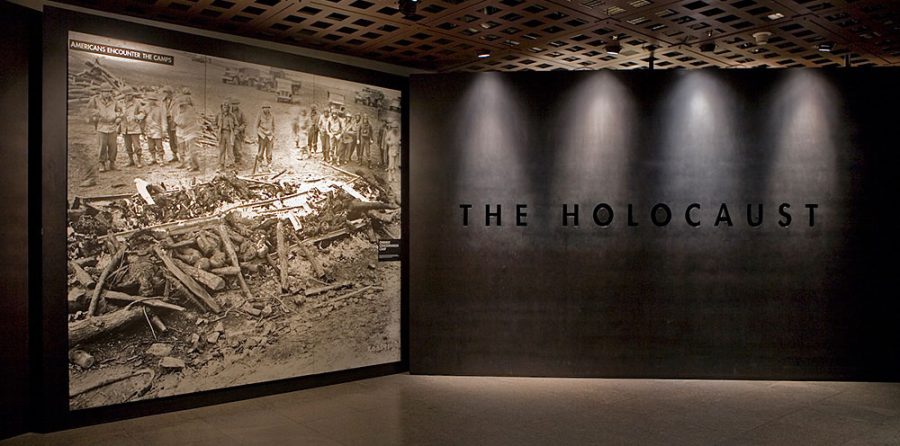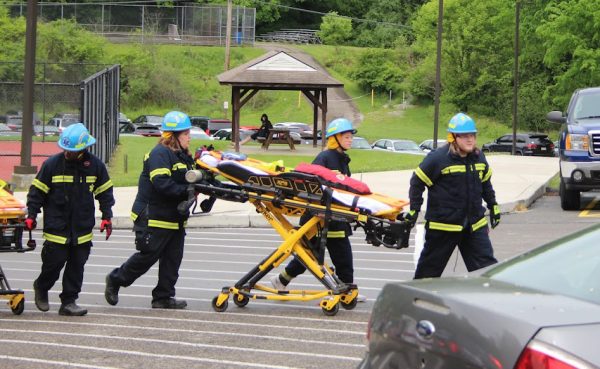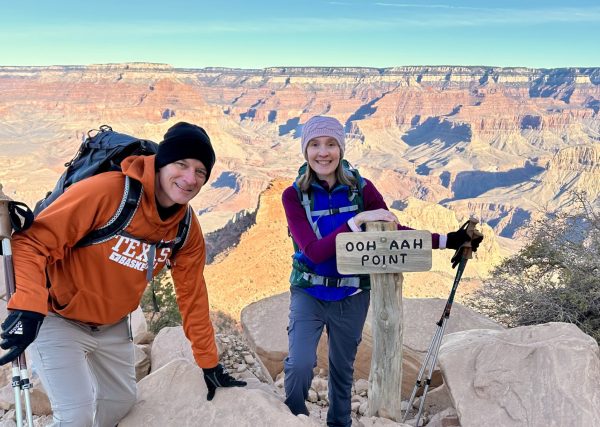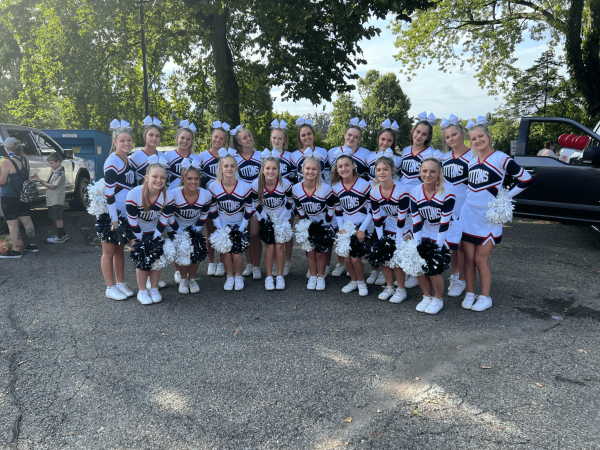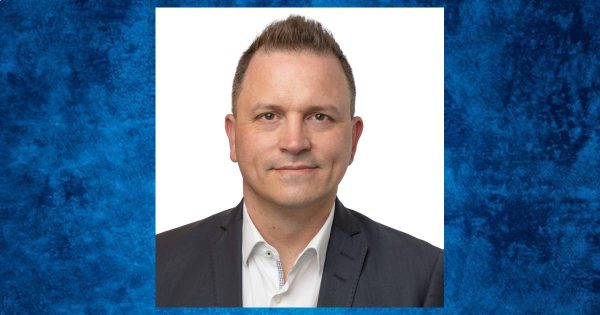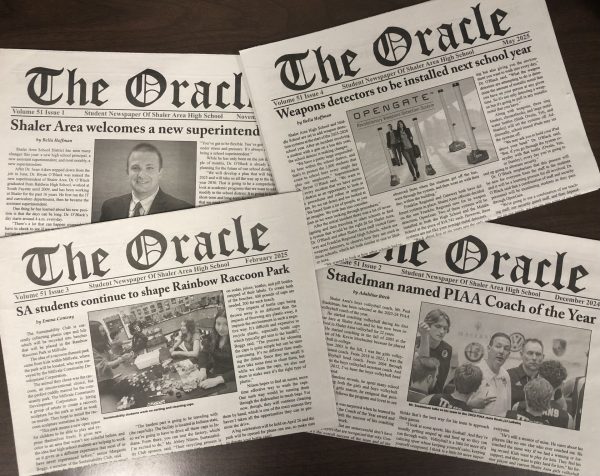US Holocaust Memorial Museum has a lasting impact on visitors
The Holocaust, a self-guided, Permanent Exhibition at the USHMM offers a chronological narrative of the Holocaust through historical artifacts, photographs, and film footage.
On November 7, 2022, 39 students of AP European History went on a field trip to Washington, D.C. to visit the United States Holocaust Memorial Museum. The trip served to educate students on one of the darkest episodes in human history.
The museum chronologically depicted events from Hitler’s rise to power to the liberation of the concentration camps and the end of the Second World War in Europe in 1945. After taking an elevator from the ground to the third floor, the exhibit began.
“The things I saw beggar description…. The visual evidence and the verbal testimony of starvation, cruelty and bestiality were… overpowering,” states a quote from General Dwight D. Eisenhower posted in the museum. “I made the visit deliberately in order to be in a position to give first-hand evidence of these things if ever, in the future, there develops a tendency to charge these allegations merely to ‘propaganda.’”
Horrifying, eye-opening, and disturbing were just some of the words students like sophomore Austin Shaw used to describe this experience.
“It’s a very sad place. If I had to describe it in one word, it’s very moving. You see things in that building that you might never see the rest of your life,” Shaw said.
If you ask anyone who went on the trip, you will be met with similar sentiments. Better yet, you take it from Holocaust survivors. A quote on the wall near the end of the museum summarized their experience.
“There were not six million Jews murdered; there was one murder, six million times,” a quote from Holocaust survivor Abe Herzberg said.
The Holocaust museum serves as a testament to the suffering of every Jewish person who died and the Jewish community at large. It stands to remind us of this tragedy to ensure it never happens again. The museum made a lasting impression on those who visited, but it is also very important to the museum workers and volunteers there.
“I was inspired to volunteer here mostly because I wanted to understand how people could be evil enough to cause the Holocaust,” Erlyn, a volunteer at the museum, said. “I think the railcar and the shoes are so memorable.”
Visitors are able to go inside a railcar that was used to transport Jews to concentration camps and see thousands of pairs of shoes that were stripped from them upon their arrival. Many more horrors await inside this memorial, and while it is a haunting experience, it is also a very important one.
“It is one of the most important field trips we can offer here at Shaler because the Holocaust is such an impactful event in history,” AP European History teacher, Mrs. Mindy Thiel said. “For you to be able to experience the museum in its entirety is going to make the biggest impact so you then become an advocate to stop hate in the future.”
These trips are not limited to just one class and have been happening for years.
Mr. Nick Haberman, a former Shaler teacher who taught the Holocaust elective class, and Mrs. Catlyn DiPasquale, the current Holocaust teacher, also regularly took their classes to tour the Holocaust museum. Mr. Haberman saw the museum as a call to action. It helped inspire him to create the LIGHT program here at Shaler Area.
“How do we use the lessons of the Holocaust to help students have opportunities to lift people up?” Mr. Haberman said. “This [organization] is Leadership through Innovation in Genocide and Human rights Teaching (LIGHT). It started here in Shaler with just me and now we’ve got over 10,000 people in our network.”
The LIGHT program has since expanded its focus to other human rights issues, but its origin in Holocaust teaching has emphasized the importance of remembering the Holocaust and preventing other such events from occurring. Visiting the museum itself is such an experience that you cannot get through textbooks.
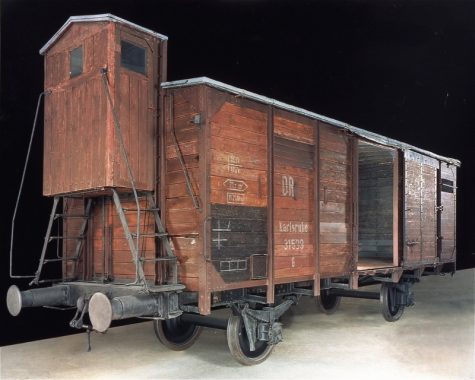
“When you’re standing in that train car, it’s one of the few times in that museum where you’ll find yourself alone in the middle of the exhibit, where the whole world seems to be falling down around you,” Mr. Haberman said. “It’s so immersive and you have a second to reflect on what it must have been like. In the train car, it’s dark, it’s quiet, it smells different, the sound is different, and it really puts you back in time.”
The train car is for so many people the most memorable part of the museum, but everything in the museum, even the most minute details represent the lives of Holocaust victims and survivors.
“For students who are going or have gone I think it inspires you a little more. It puts a feeling inside of you in your heart about wanting to know more for these people,” Mrs. DiPasquale said. “We look at these statistics (six million Jews who were murdered) and they’re shocking; but when you go to the Holocaust museum, it’s somebody’s face, it’s somebody’s name, it’s somebody.”
We can never really comprehend the Holocaust, but we can remember the lives of Holocaust victims and honor their memory.
“I think the museum is one of the most important places you can visit at any age. It is the most comprehensive space you can physically be in and see that’s going to cover what happened, why it happened, and what happened after,” Mrs. DiPasquale said. “Things didn’t just end. We still have anti-Semitism and other genocides happening today.”
The museum has inspired and uplifted people all across the country and the world and is why this trip is made annually by so many Shaler students.
“The Holocaust museum was very beneficial in introducing us to the horrors and atrocities that happened at that time. It is something that I think everyone should see,” Shaw said.
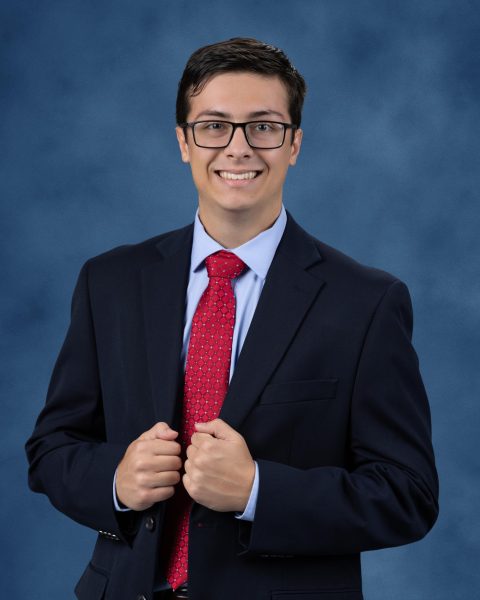
Matthew Purucker is a senior and in his second year writing for The Oracle. Matt is captain of the Shaler Area Boys Soccer team, the play-by-play commentator...


